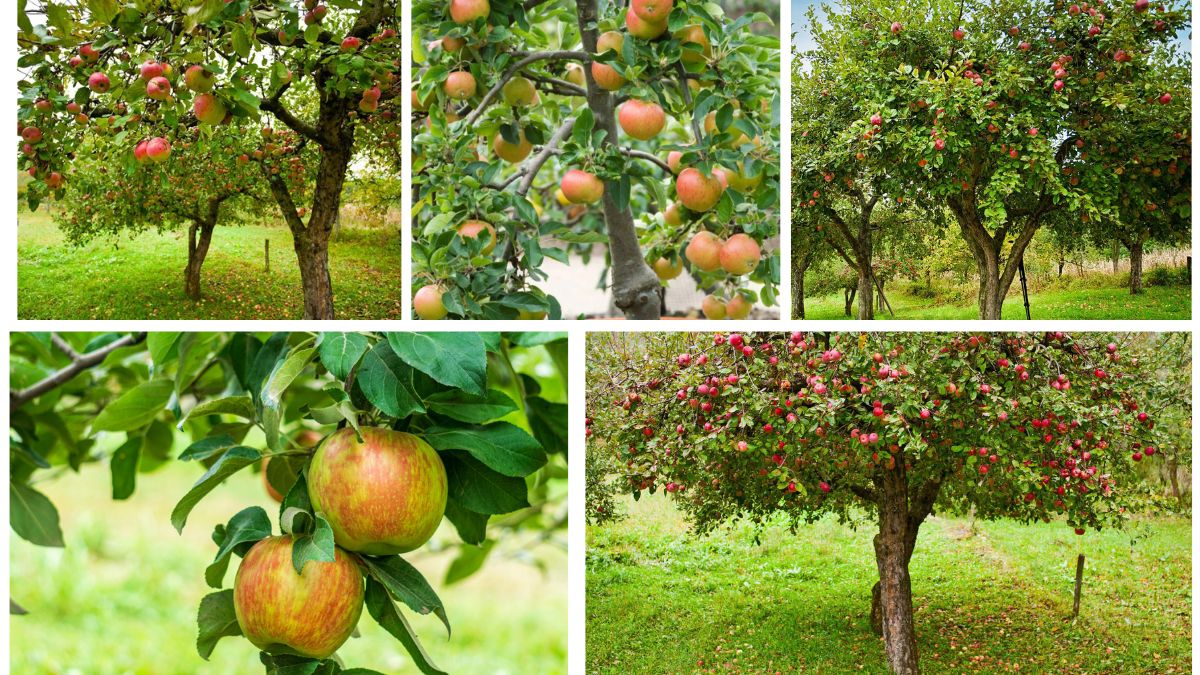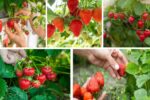Growing your own apple tree is one of the most rewarding gardening experiences. Not only do you get to enjoy the lush greenery and fragrant spring blossoms, but with the right care, you’ll also harvest crisp, juicy apples straight from your backyard. Whether you’re a beginner gardener or an experienced grower, planting an apple tree requires patience, proper preparation, and consistent maintenance. In this detailed guide, we’ll walk you through everything you need to know about planting, nurturing, and eventually enjoying fresh apples from your very own tree.
Why Grow an Apple Tree?
Apple trees are timeless garden staples. They not only provide shade and beauty but also offer a bountiful supply of fresh fruit, free from chemicals and artificial preservatives. Homegrown apples taste fresher and are often more nutritious than store-bought ones. Additionally, apple trees can be grown in various climates, with different varieties suited for different regions. Once established, a healthy apple tree can produce fruit for decades, making it a long-term investment in both beauty and sustainability.
Step 1: Choose the Right Apple Tree Variety

Not all apple trees are the same, and selecting the right type is crucial for a successful harvest.
- Climate Compatibility – Certain varieties thrive better in specific climates. For example:
- Fuji, Gala, and Honeycrisp grow best in cooler climates.
- Tropical Anna or Dorsett Golden do well in warmer regions.
- Pollination Needs – Most apple trees require cross-pollination, meaning you’ll need at least two different varieties nearby for successful fruiting. However, some are self-pollinating, such as Granny Smith and Golden Delicious.
- Space and Size – Decide whether you want a standard-sized tree (large and spreading) or a dwarf/semi-dwarf tree that fits well in smaller gardens or containers.
By researching and selecting wisely, you’ll set your apple tree up for long-term success.
Step 2: Select the Perfect Planting Site
Apple trees need the right environment to thrive. Choose a location that provides:
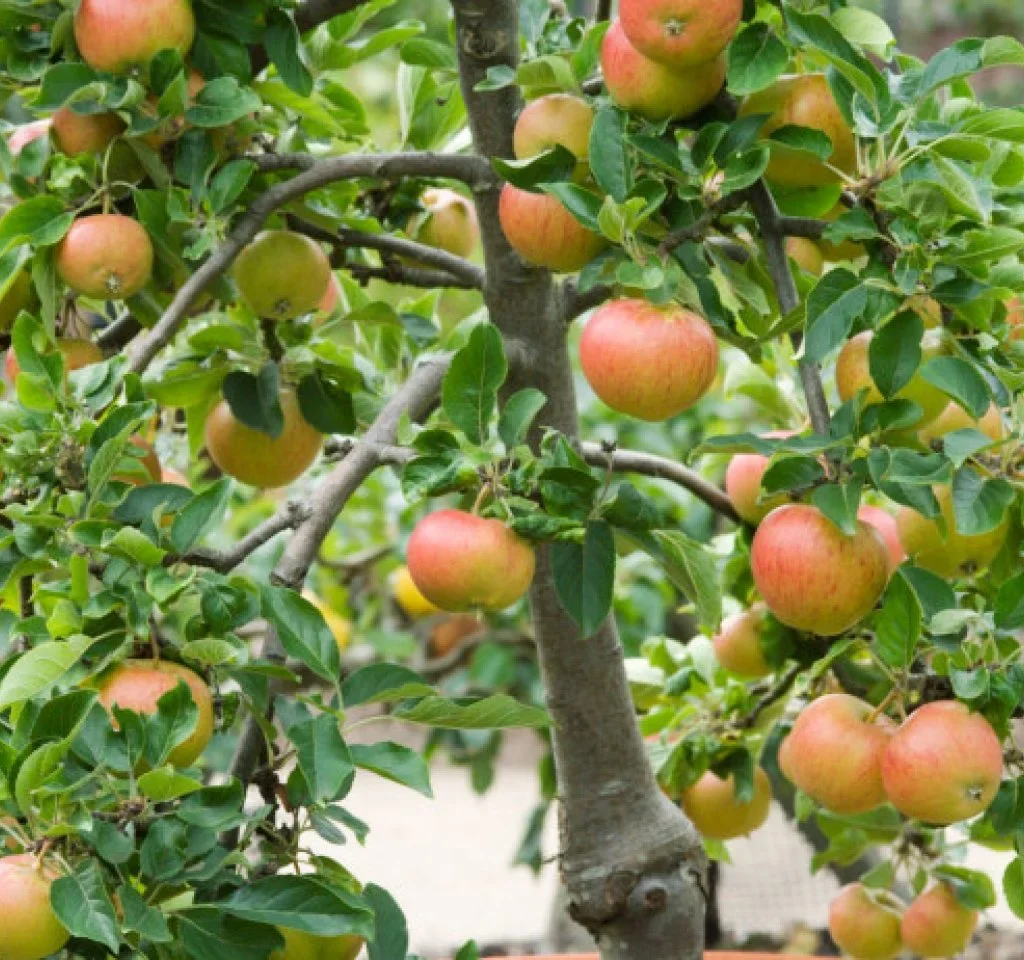
- Full Sunlight – At least 6–8 hours of direct sunlight daily.
- Well-Drained Soil – Apple trees dislike waterlogged conditions. Loamy or sandy soil with good drainage works best.
- Air Circulation – Open spaces reduce the risk of fungal diseases.
- Spacing – Standard trees need about 20–25 feet of space, while dwarf varieties require only 10–15 feet.
If you’re planting multiple trees, ensure they are spaced properly for healthy growth and effective pollination.
Step 3: Prepare the Soil
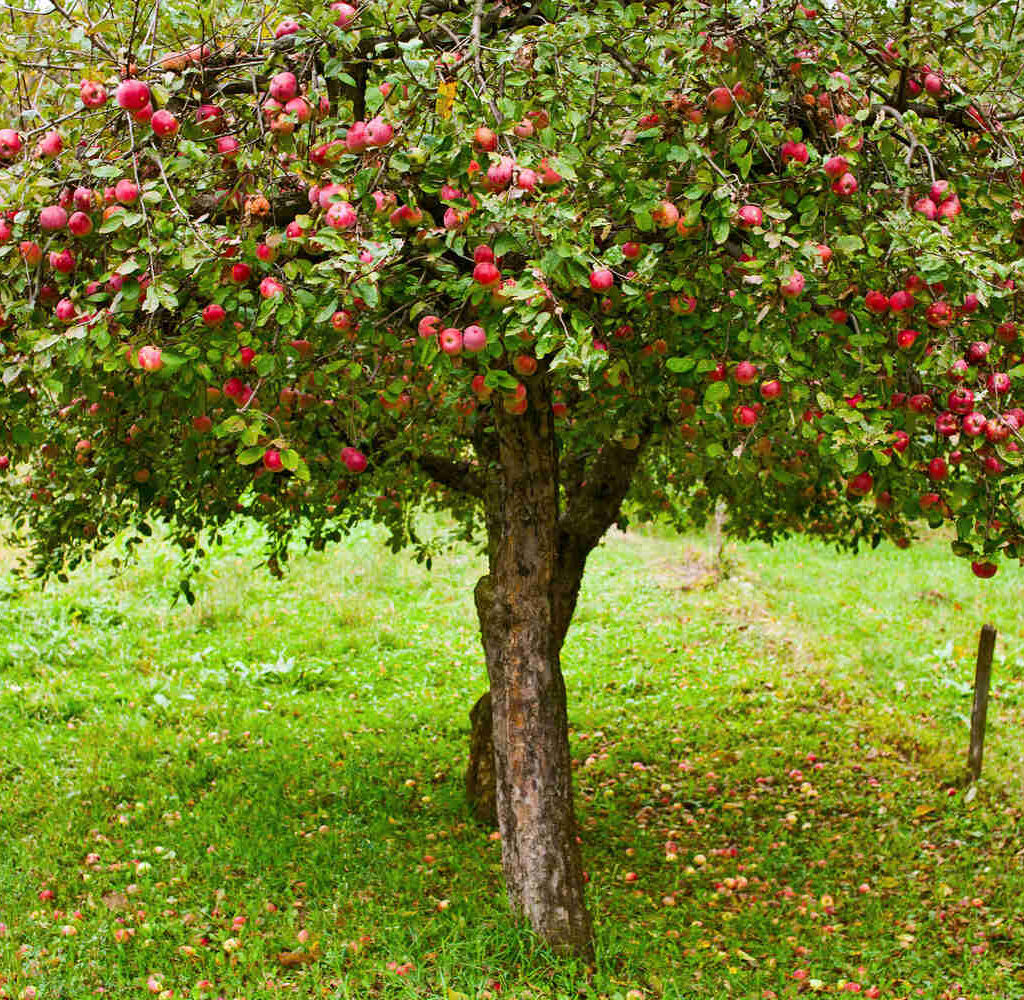
Soil preparation is vital before planting an apple tree. Here’s how to get started:
- Test the Soil – Apple trees prefer a pH between 6.0 and 7.0. You can use a simple home testing kit.
- Amend the Soil – If the soil is too acidic, add lime; if too alkaline, add sulfur. Enrich the soil with organic matter like compost or well-rotted manure to improve fertility.
- Clear the Area – Remove weeds, grasses, or any debris around the planting site to give your sapling a healthy start.
Step 4: Planting the Apple Tree
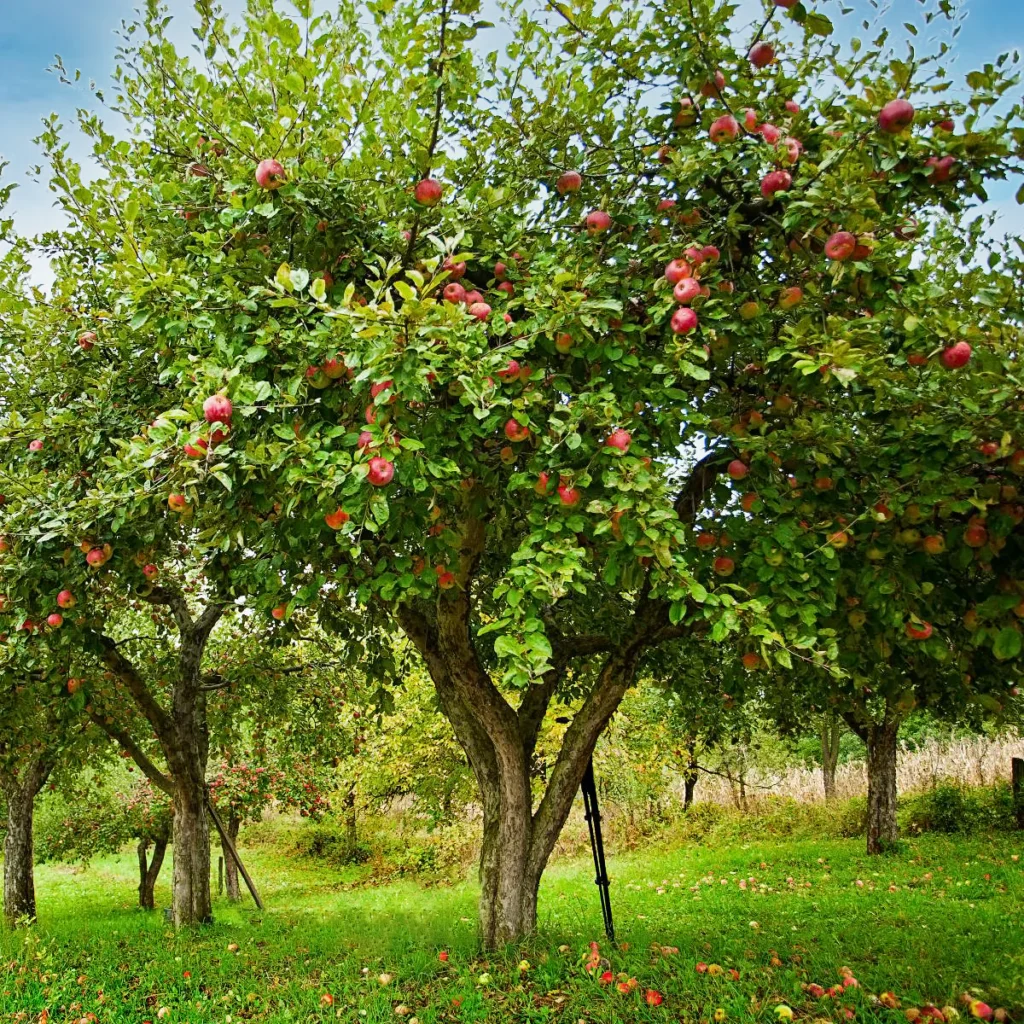
Now comes the exciting part—planting your apple tree. Follow these steps carefully:
- Dig the Hole – The hole should be twice as wide as the root ball but no deeper than the roots.
- Position the Tree – Place the tree upright in the hole, ensuring the graft union (the swollen part above the roots) sits about 2–3 inches above the soil line.
- Backfill Carefully – Refill the hole with the amended soil, pressing gently to remove air pockets.
- Water Generously – Water the tree deeply to help settle the soil around the roots.
- Mulch – Apply a 2–4 inch layer of mulch around the base, leaving a gap near the trunk to prevent rotting.
Step 5: Watering and Fertilization
Proper watering and feeding are essential for establishing strong roots.
- Watering – During the first year, water young apple trees weekly, ensuring the soil stays moist but not waterlogged. Once established, trees require less frequent watering except during dry spells.
- Fertilization – Feed the tree with a balanced fertilizer (such as 10-10-10) in early spring before new growth begins. Avoid over-fertilizing, as this can cause excessive leafy growth instead of fruit production.
Step 6: Pruning for Growth and Health
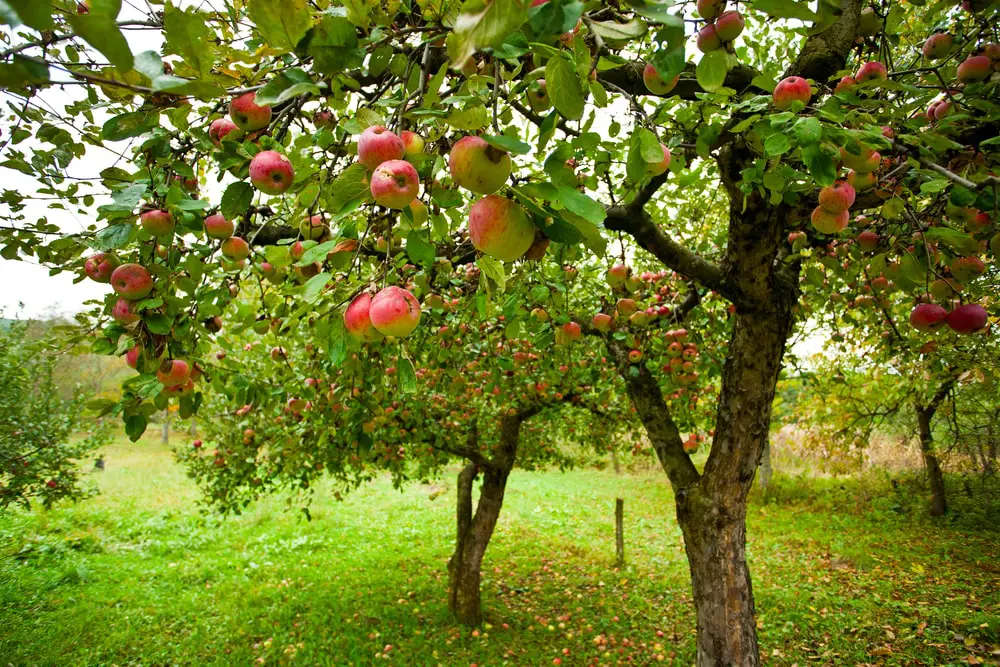
Pruning is one of the most important aspects of apple tree care. It shapes the tree, improves air circulation, and encourages fruiting.
- First-Year Pruning – Trim the top of the sapling to encourage branching.
- Annual Pruning – Each winter, remove dead, damaged, or crossing branches. Aim to create an open, vase-like structure that allows sunlight and airflow.
- Fruit Thinning – Once the tree starts producing, thin excess fruit in early summer to ensure larger, healthier apples.
Step 7: Protecting Against Pests and Diseases
Apple trees are vulnerable to pests and fungal issues. Some common problems include:
- Apple Scab – A fungal disease causing dark spots on leaves and fruit.
- Codling Moth – Larvae that burrow into apples, making them inedible.
- Aphids and Spider Mites – Small insects that weaken trees by sucking sap.
Prevention Tips:
- Keep the area clean by removing fallen leaves and fruit.
- Use organic insecticidal sprays or neem oil.
- Encourage natural predators like ladybugs and birds.
- Regularly inspect your tree for signs of disease or infestation.
Step 8: Patience and Harvesting
Apple trees take time to mature before producing fruit. Here’s what to expect:
- Dwarf Varieties – May produce fruit in 2–3 years.
- Standard Varieties – Usually take 5–7 years before yielding.
Harvesting apples is an art. They are ready when:
- The fruit is firm and fully colored.
- Apples twist easily off the branch.
- Seeds inside turn brown.
Different apple varieties ripen at different times, ranging from late summer to fall. Once harvested, apples can be enjoyed fresh, stored in a cool place, or used in cooking and baking.
Step 9: Long-Term Care and Maintenance
Apple trees are long-lived if properly maintained. Continue with yearly pruning, fertilization, and disease prevention. Refresh mulch each season, and keep monitoring for pests. With regular attention, your apple tree will reward you with delicious harvests year after year.
Benefits of Growing Your Own Apple Tree
- Freshness – Nothing compares to biting into a freshly picked apple.
- Nutrition – Apples are rich in fiber, vitamin C, and antioxidants.
- Cost-Effective – Once established, your tree provides free fruit for decades.
- Eco-Friendly – Reduce reliance on store-bought produce transported long distances.
- Beauty – Apple blossoms in spring add ornamental charm to any garden.
Conclusion
Planting an apple tree is a journey of patience, learning, and reward. From choosing the right variety and preparing the soil to pruning and protecting against pests, every step contributes to the long-term success of your tree. While it may take years to enjoy the first crisp bite, the satisfaction of growing your own fruit is unmatched. With proper care, your apple tree will not only provide fresh produce but also become a centerpiece of beauty and sustainability in your garden for generations to come.
